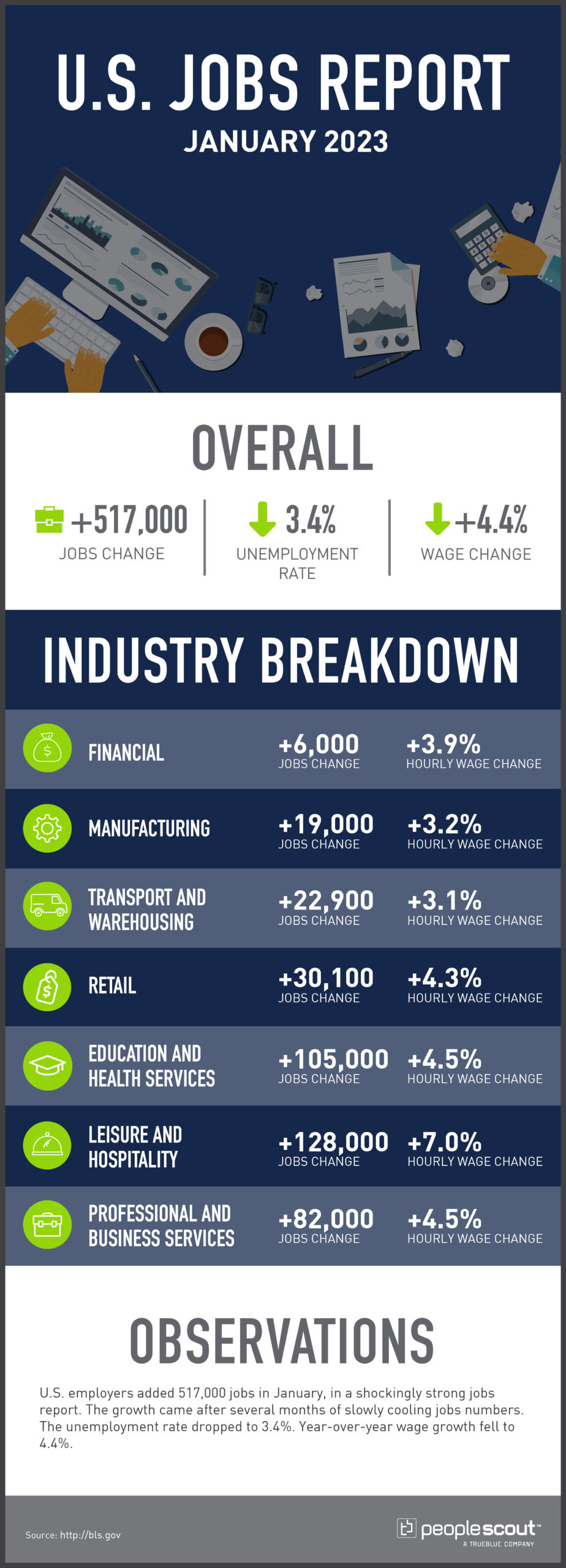U.S. employers added 517,000 jobs in January, in a shockingly strong jobs report. The growth came after several months of slowly cooling jobs numbers. The unemployment rate dropped to 3.4%. Year-over-year wage growth fell to 4.4%.

The Numbers
517,000: The U.S. economy added 517,000 jobs in January.
3.4%: The unemployment rate fell to 3.4%.
4.4%: Wages rose 4.4% over the past year.
The Good
The numbers in January’s jobs report were surprisingly strong. According to the Wall Street Journal, the unemployment rate of 3.4% is the lowest in 53 years. The monthly job growth was the strongest we’ve seen since July 2022, with the leisure and hospitality sector leading in job gains.The length of the average work week grew, which means that not only are more people working, but they’re also working more hours. Finally, despite the strong growth and low unemployment rate, wage growth continued to soften, a good indicator of decreasing inflation.
The Bad
The bad news in January’s report is that the Federal Reserve likely has more work to do to combat high inflation. According to the New York Times, Fed officials have said that they are looking for the labor market to cool. While the slower wage growth is a step in the right direction, January’s numbers show a robust, competitive and resilient job market. Federal Reserve Chair Jerome Powell said that they will continue to watch economic data ahead of their next meetings in March and May.
The Unknown
When combined with other economic indications, January’s jobs report highlights the mixed signals of the U.S. economy. Like wage growth, inflation is starting to slow. Tech company layoffs have made significant headlines, and more job cuts are expected. Despite the strong job growth, the labor participation rate remains well below pre-pandemic numbers. Now, as MarketWatch reports, many businesses are reluctant to lay off workers that they struggled to hire in 2021 and 2022, which could help the U.S. economy avoid a recession.




